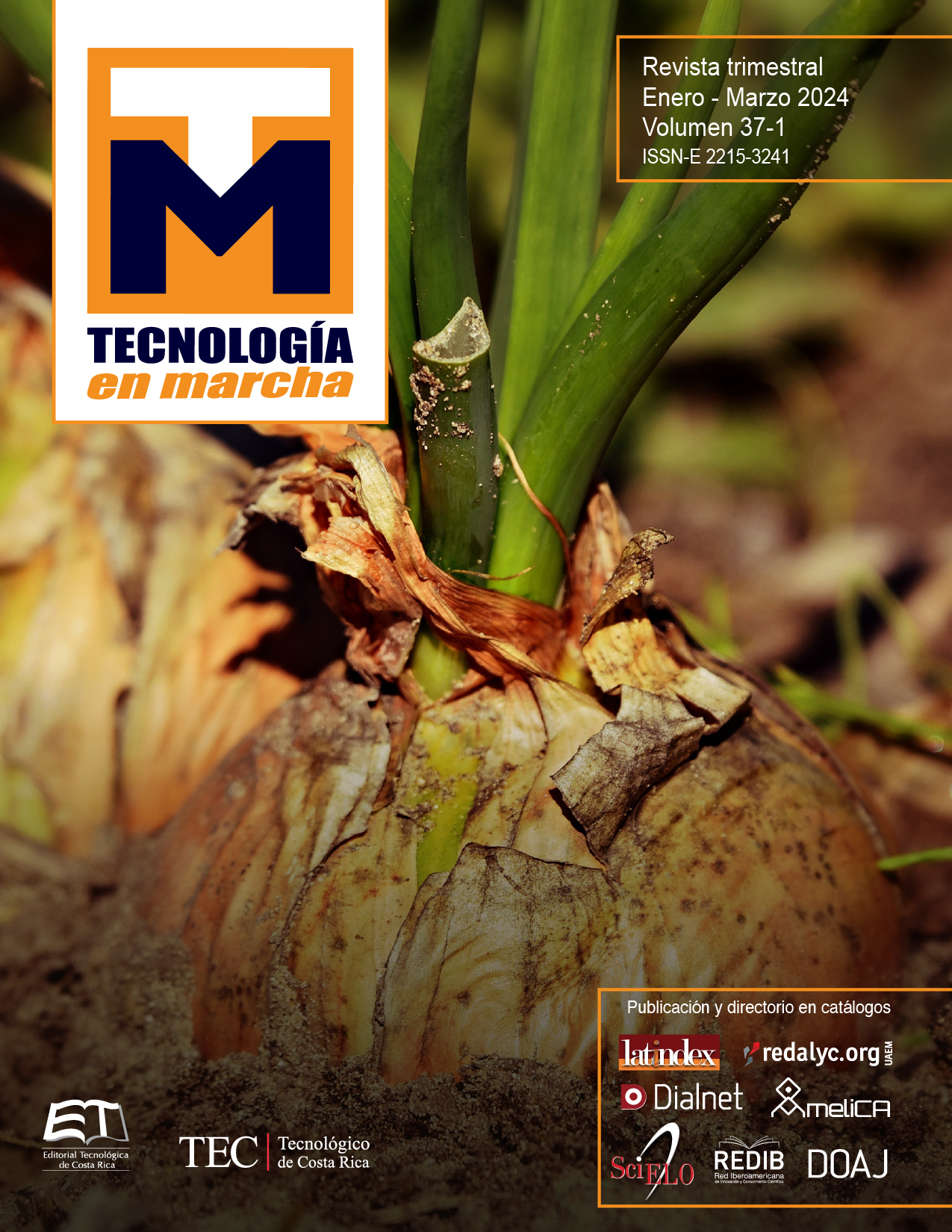Evaluation of the sound impact of the urban train and its social implications: analysis of the San José – Tres Ríos section
Main Article Content
Abstract
The sound impact of the urban passenger train is a phenomenon little studied in the country and in Latin America. In the particular case of Costa Rica, the train was reactivated without considering aspects such as the development of land use in the surroundings, so there is a potential impact on the population that for years lived next to inactive railway lines. The methodology followed combined field measurements at key locations for each station studied, geographic information systems, and opinions of the populations involved through surveys applied to users, neighbors, and merchants in the area of direct influence (ADI). The results show that the levels of noise pollution produced in the event of arrival and departure of the train in the stations of the San José - Tres Ríos branch exceed those allowed by law in at least 10% of the time. In addition, by intertwining the field data with the perception study, the sensory effect of noise was quantified. The main findings show that in general all populations feel a significant sound impact that affects their quality of life and the quality of service; that the people who live or work in points closer to the stations have felt a decrease in the acoustic environmental quality and that promoting a change in planning oriented towards this means of transport can be a solution to the problem.
Article Details

This work is licensed under a Creative Commons Attribution-NonCommercial-NoDerivatives 4.0 International License.
Los autores conservan los derechos de autor y ceden a la revista el derecho de la primera publicación y pueda editarlo, reproducirlo, distribuirlo, exhibirlo y comunicarlo en el país y en el extranjero mediante medios impresos y electrónicos. Asimismo, asumen el compromiso sobre cualquier litigio o reclamación relacionada con derechos de propiedad intelectual, exonerando de responsabilidad a la Editorial Tecnológica de Costa Rica. Además, se establece que los autores pueden realizar otros acuerdos contractuales independientes y adicionales para la distribución no exclusiva de la versión del artículo publicado en esta revista (p. ej., incluirlo en un repositorio institucional o publicarlo en un libro) siempre que indiquen claramente que el trabajo se publicó por primera vez en esta revista.
References
L Abad, D Colorado, D Martín y M Retana. Ruido ambiental: seguridad y salud. Revista de Ciencia, Tecnología y Medio Ambiente, 8(9),696-8085. [En línea]. Disponible: https://dialnet.unirioja.es/servlet/articulo?codigo=3719298 [Consultado el 12 de mayo de 2019]
D Amo, Contaminación Acústica Causada por el Transporte en el País Vasco y Cataluña: una aproximación estadística-Proyecto TransP1, 2016. Disponible en: https://academica-e.unavarra.es/xmlui/bitstream/handle/2454/22223/629357.pdf. [Consultado el 12 de mayo de 2019]
U Clausen, C Doll, F Franklin, G Franklin, H Heinrichmeyer, J Kochsiek, W Rothengatter y N Sieber, Reducción de la Contaminación Acústica en el Sector Ferroviario (PE 474.533), 2012. Disponible en: https://www.europarl.europa.eu/RegData/etudes/etudes/join/2012/474533/IPOL-TRAN_ET(2012)474533(SUM01)_ES.pdf. [Consultado el 25 de mayo 2019]
R Lee y I Sener, Transportation planning and quality of life: Where do they intersect?, 2016. Disponible en: https://www.sciencedirect.com/science/article/abs/pii/S0967070X16300968?via%3Dihub. [Consultado el 01 de agosto de 2022]
M Nemec, A Danihelová, T Gergel, M Gejdos, V Ondrejka y Z Danihelová, Measurement and Prediction of Railway Noise Case Study from Slovakia, 2020. Disponible en: https://www.ncbi.nlm.nih.gov/pmc/articles/PMC7277611/. [Consultado el 30 de junio de 2022]
M Wrótny y J Bohatkiewicz, Impact of Railway Noise on People Based on Strategic Acoustic Maps. sustainability, 12(14), 2020. Disponible en: https://www.mdpi.com/2071-1050/12/14/5637. [Consultado el 30 de junio de 2022]
J Jiménez y C Linares, Efectos en salud del ruido de tráfico: Más allá de las “molestias”, 2015. Disponible en: https://ojs.diffundit.com/index.php/rsa/article/download/709/714. [Consultado el 30 de junio de 2022]
Real Academia Española, Contaminación Acústica, 2020. Disponible en: https://dpej.rae.es/lema/contaminaci%C3%B3n-ac%C3%BAstica. [Consultado 16 de julio de 2020]
Y González y Y Fernández, Efectos de la contaminación sónica sobre la salud de estudiantes y docentes, en centros escolares, Revista Cubana de Higiene y Epidemiología, 52(3), 1561-3003, vol.52, no.3, set-dic 2014. [En linea]. Disponible: http://scielo.sld.cu/scielo.php?script=sci_arttext&pid=S1561- 30032014000300012
L Madrigal, Hace 20 años, José María Figueres cerró el INCOFER y el país sufre hoy las consecuencias, 2015. Disponible en: https://www.elmundo.cr/costa-rica/hace-20-anos-jose-maria-figueres-cerro-el-incofer-y-el-pais-sufre-hoy-las-consecuencias/. [Consultado el 14 de setiembre de 2022]
R Ayala, Plan de ruido: Plan ordenación urbana contra el ruido. Stop Ruido, 2017. Disponible en: http://www.abogadosruidos.com/blog/plan- ordenacion-urbana-prevenir-ruidos.php. [Consultado el 18 de setiembre de 2022]
M Frost y S Ison, S, Comparison of noise impacts from urban transport, 2007. Disponible en: https://www.icevirtuallibrary.com/doi/epdf/10.1680/tran.2007.160.4.165. [Consultado el 30 de junio 2022]
J Romero, A Jiménez, A Marín, A Sanchis y S Cerdá, Un primer estudio del ruido en los actuales trenes de la red ferroviaria española, 2016. Disponible en: http://www.sea-acustica.es/fileadmin/publicaciones/revista_VOL34-12_01_01.pdf. [Consultado el 20 de mayo 2021]
A Segundo, W Contreras, J Delgado, M Owen, M Rondón, A Contreras, Estudio de Distribución Espacial de la contaminación acústica en la ciudad de Mérida, Venezuela, 2017. Disponible en: http://bdigital2.ula.ve:8080/xmlui/bitstream/handle/654321/534/21921923834.pdf?sequence=1&isAllowed=y. [Consultado el 20 de febrero 2020]
Instituto Costarricense de Ferrocarriles, Informe de estadísticas operativas II semestre 2019. Disponible en: http://www.incofer.go.cr/estadisticas/index.htm. [Consultado el 25 de agosto 2022]
L Morales, D Aldás, S Collantes y J Reyes, “Implicaciones en la salud ocupacional por exposiciones de luz y ruido en trabajadores de manufactura de calzado”, vol.14, no.1, ene-jul 2015. [En linea]. Disponible: https://revistasdigitales.upec.edu.ec/index.php/sathiri/article/view/817
R Quezada, “El Ruido en la Planificación Territorial Comuna de Providencia”, 2002. Disponible en: http://cybertesis.uach.cl/tesis/uach/2002/bmfciq.5r/doc/bmfciq.5r.pdf. [Consultado el 25 de mayo 2022]

